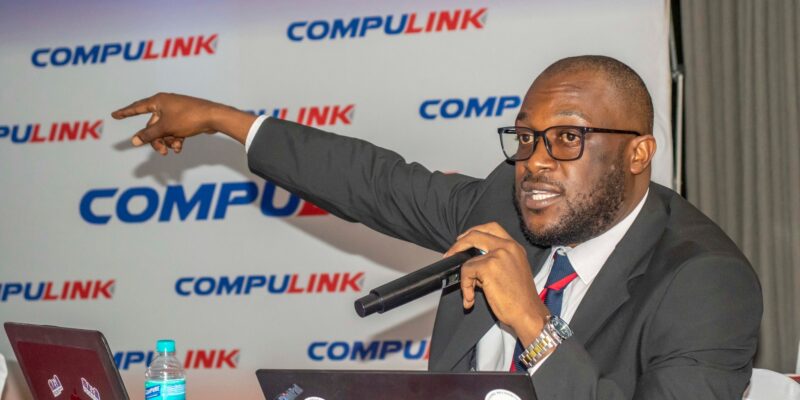Cyber threats are evolving and financial institutions are now turning to cutting-edge technologies while balancing automation with human expertise to safeguard customer data.
The financial services industry face unprecedented challenges from cybercriminals, with social engineering attacks like phishing accounting for 68% of data breaches, highlighting human factors as critical vulnerabilities.
Ransomware remains a top claim driver in cyber insurance, with attackers exploiting vulnerabilities in digital infrastructure.
By Gamuchirai Mapako
During his presentation “Benchmarking and using Technology to bring services to people” at the 2025 cyber fraud summit, cybersecurity expert : Malvern Chisvo highlighted how technologies such as artificial intelligence (AI) and blockchain are transforming fraud detection and mitigation. However, he also warned against over-reliance on automation, emphasising the need for a balanced approach that integrates human oversight.
AI and machine learning (ML) have become cornerstones of modern fraud prevention strategies. Financial institutions now deploy these technologies to analyse vast datasets in real time, identifying anomalies such as unusual login patterns or suspicious transactions. For example, AI-driven chatbots not only streamline customer service but also flag potential fraud attempts during interactions.
Mr Chisvo cited KnowBe4’s Phish-prone Percentage (PPP) metric, which reveals that 34.3% of untrained employees are vulnerable to phishing attacks. AI tools help mitigate this risk by simulating phishing scenarios and training staff to recognize threats. However, the presenter cautioned that AI introduces new risks, such as deep fake-enabled social engineering, where criminals use synthetic media to impersonate executives or clients.
Blockchain technology remains another critical tool in the fight against fraud. By creating tamper-proof records of transactions, blockchain ensures transparency and reduces the risk of manipulation.
In the insightful presentation, Mr Chisvo also pointed to IBM Food Trust as a model for financial services, where blockchain could secure supply chain financing and cross-border payments.
In fraud detection, blockchain’s decentralised nature makes it resistant to single points of failure. For instance, smart contracts can automatically verify identities or release funds only when predefined conditions are met, reducing opportunities for human error or malicious interference.
Despite the promise of AI and blockchain, Mr Chisvo stressed that technology alone is insufficient. Over-reliance on automation can lead to blind spots, particularly in detecting sophisticated, evolving threats. He pin pointed cases where AI systems misinterpreted legitimate transactions as fraudulent, causing customer frustration and operational delays.
And to address this, leading institutions are adopting a layered security approach, policies and training, human-in-the-loop systems and incident response drills
Mr Chisvo urged organisations to align cyber insurance policies with frameworks like NIST and ISO 27001 to ensure comprehensive coverage. He also referenced China’s 2023 opinions on promoting cybersecurity insurance, which advocates for standardised risk assessments to streamline underwriting.
Navigating regulatory requirements is another hurdle and tools like OneTrust help organisations comply with GDPR and other data governance laws. However, implementation can be costly. Mr Chisvo recommended a phased approach, starting with modular technologies like cloud migration, to manage expenses while scaling security measures.
The best practices for a resilient future in cybersecurity remain continuous benchmarking, bug bounty programs and zero trust models















Comments